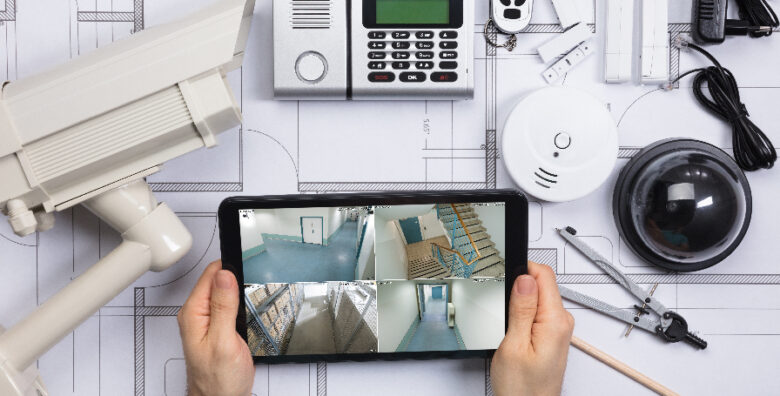In an age where technology is empowering people, DIY home security systems are becoming increasingly popular. Thanks to advances in smart home technology and low-cost security equipment, setting up a reliable security system has never been easier. This complete guide will show you how to create your home security system. It includes information about the best appliances, how to install them, and tips for home safety and security.
1. Assessing Your Home Security Needs
Before you start your home security, think carefully about what you need. Look at how your home is laid out, identify possible entry points, and consider whether your neighborhood is prone to crime. Understanding your needs can help ensure your security system is designed to effectively prevent potential weaknesses. To help you choose the right security equipment, make a list of key areas such as doors, windows, and exteriors.
2. Important Homemade Security Tools
- Smart camera: Invest in a smart camera that can detect motion, see in the dark, and record sounds from both directions. Place cameras strategically to cover important areas of your property and get a full picture of what’s going on around you. Ring, Arlo, and Wyze cameras are all popular choices.
- Smart Doorbell Cameras: Smart doorbell cameras can help you keep your front door more secure. These gadgets allow you to see and speak to your visitors remotely. Look for models that can connect to other smart home platforms, such as Nest Hello and Ring Video Doorbell, and record HD video.
- Motion Sensors: Place motion sensors indoors and outdoors to detect people moving in certain areas. These sensors can sound alarms or notifications and act as a great deterrent. Both the Philips Hue motion sensor and the Samsung SmartThings motion sensor are easy to use and work with several different platforms.
- Smart Locks: Use smart locks instead of old-fashioned locks to enable keyless entry and let you control access remotely. Some smart locks, such as the August and Schlage models, come with temporary passcodes that work with virtual assistants such as Amazon Alexa and Google Assistant.
3. DIY Installation Tips
- Wireless systems: Choose wireless devices to make installation easier. Many homemade security devices run on batteries and connect to your home Wi-Fi network, so you don’t have to worry about complicated wiring.
- Placement: Place cameras and sensors in strategic locations to protect access points and weak points. For best coverage and results, make sure the sections are properly aligned.
- Connectivity: Make sure the device you want to buy works with your home network and other smart home platforms. Make sure you have a strong WiFi connection so that all your devices can communicate with each other without any problems.
4. Smart Home Combination Platform
Connecting your DIY security system to popular smart home platforms makes it work even better. Platforms like Google Home, Amazon Alexa, and Apple HomeKit let you automate security tasks and control everything from one place. Set up routines to make your security operations work with other smart devices in your home to keep the entire system functioning properly.
5. Monitoring and Alerts
Use mobile apps with security devices to monitor your home remotely. Set real-time alerts for suspicious activity and change notification settings so you can stay informed without receiving too many unnecessary alerts.
Conclusion
Starting to build your home security system can give you a sense of accomplishment and pride. By figuring out your needs, choosing the right equipment, and following the right installation and integration steps, you can create a strong home security system that meets your needs. Monitor your system and keep it up to date to ensure it is always secure. Your DIY security system can be transformed over time, giving you peace of mind and a safer home.
FAQs
1. What is a “DIY” home security system?
Do-it-yourself (DIY) home security systems are systems that homeowners can set up and monitor using smart devices that are easy to find. These systems often have cameras, motion sensors, smart doorbell cameras, and smart locks as components.
2. Why should you try to protect your home yourself?
DIY home security systems are an inexpensive and flexible option for people who want to take control of their home security. This lets you choose which devices to install and how to set them up, and they can be customized to your needs.
3. How do I determine how safe my home should be?
First, look at how your home is laid out, identify possible entry points, and consider whether your neighborhood is prone to crime. To help you choose the right security equipment, make a list of the most important areas, such as doors and windows.
4. What are some must-have DIY security tools?
Smart cameras, smart doorbell cameras, motion sensors, and smart locks are some of the most important security tools you can make yourself. Brands like Ring, Arlo, Wyze, August, and Schlage offer reliable options with a range of features.
5. Can I easily set up my security system?
Yes, many self-service security devices work wirelessly and can connect to your home Wi-Fi network. They run on batteries. This wireless setup makes installation easier because you don’t have to deal with complicated wiring.
6. Where should I place my security cameras for the best coverage?
Planned placement of cameras and sensors in key areas such as access points and weak points. For best coverage and results, make sure the sections are properly aligned.



